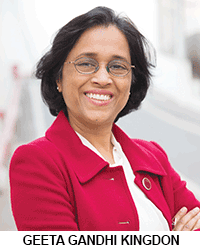 Many educationally advanced, especially OECD countries, rank schools on the basis of average marks of students in school-leaving board examinations. In India, neither national (CBSE and CISCE) nor state exam boards do so.
Many educationally advanced, especially OECD countries, rank schools on the basis of average marks of students in school-leaving board examinations. In India, neither national (CBSE and CISCE) nor state exam boards do so.
There are two major arguments in favour of publishing academic school rankings. First, the information will enable parents to make better-informed school choices for their children. Secondly, when parents know the average marks of all local schools, low ranked schools are subjected to greater pressure to improve teaching-learning standards to attract and retain students.
A powerful incentive for school managements to invest greater effort into institutional improvement and enhance students’ learning outcomes is provision of information to parents and communities about school performance in board exams. Such information empowers parents to hold teachers and schools accountable. In addition, sharing information about the relative learning outcomes of various schools in a city or town provokes healthy inter-school competition which stimulates greater effort by teachers and institutional managements.
However, the social benefits of parental choice and inter-school competition have to be balanced against the disadvantages of ranking schools on the basis of exam results. Apart from objective rankings being based entirely on the narrow metric of academic outcomes, ranks awarded may be reflecting the family backgrounds of students, and are not necessarily indicative of institutional quality. Schools admitting pupils from monetarily better-off and more educated households tend to attain high academic scores. But this is often attributable to exclusive schools ‘cream-skimming’ most enabled children, rather than their better teachers and administration.
Despite such apprehensions, several countries and exam boards abroad publish school rankings based on common exam results, indicating that the benefits of transparency outweigh social costs. However, many of them have refined their ranking methodologies by publishing sophisticated ‘value-added’ league-tables that rank schools according to their ‘gain in achievement,’ (i.e, improvement in board results over the previous year), rather than according to board exam results of just one year.
With unavailability of learning outcomes data from exam boards, for over a decade EducationWorld has been publishing annual school rankings based on the perceptions of a substantial sample — including parents, principals, teachers, students — of 12,000-15,000 respondents. Under the EW methodology, schools in discrete categories are rated under 12-14 parameters including ‘academic reputation’. However, in a paper I co-authored with Prashant Bhattacharji and published in the Delhi-based journal Contemporary Education Dialogue (2016), we demonstrated that objective school rankings based on board exam results of schools, and subjective school rankings (based on EW sample respondents’ perceptions of ‘academic reputation’) differ substantially, with a correlation coefficient of only 0.65.
This suggests that EW sample respondents’ perceptions about the academic performance of schools in their city/town are far removed from reality. This gap between perception and reality is a strong argument for government mandating ranking of schools according to board exam results. This would enable parents to evaluate the relative academic merit of all schools. In fairness, it should be stated that EducationWorld editors have persistently solicited average scores of schools, but exam boards have been loathe to part with this data.
The resistance of India’s school boards to transparently publish schools’ average exams scores is probably due to resistance from teachers unions and old-fashioned socialist sentiment of not encouraging inter-school competition. But despite similar resistance, governments of several OECD member countries have pressed ahead to publish annual rankings.
The good news is that following the good example of the World University Rankings published annually by the London-based QS and Times Higher Education, the government of India has acknowledged the need to rank higher education institutions. In 2015, the Union education ministry introduced the National Institutional Ranking Framework (NIRF). In 2019, Niti Aayog — the Central government’s think tank — also started ranking Indian states in a School Education Quality Index (SEQI) for which this author was a peer-reviewer.
Against this backdrop, this seems the right time to introduce transparent K-12 academic school rankings based on their students’ performance in board exams, after taking precautions to factor in the moderation and marks-inflation practices of several exam boards. Liberal marking necessitates basing school rankings on the median rather than on average scores of schools. Institution rankings should also factor-in schools’ success in terms of their students getting admission into best undergrad colleges which is gauged by success in public entrance exams such as IIT-JEE, NEET, SAT, CLAT, etc.
(Prof. Geeta Kingdon is chair of Education Economics & International Development at the Institute of Education, University College London)























